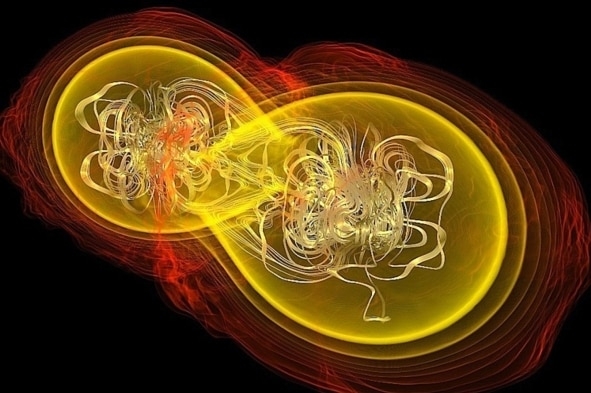Rumors Swell Over New Kind of Gravitational-Wave Sighting

A still from a computer simulation of merging neutron stars, which are thought to power short gamma-ray bursts. Rumors are swirling that gravitational-wave observatories as well as electromagnetic ground- and space-based telescopes have all spied such a merger in the distant galaxy NGC 4993. Credit: NASA/AEI/ZIB/M. Koppitz and L. Rezzolla
Astrophysicists may have detected gravitational waves last week from the collision of two neutron stars in a distant galaxy—and telescopes trained on the same region might also have spotted the event.
Rumours to that effect are spreading fast online, much to researchers’ excitement. Such a detection could mark a new era of astronomy: one in which phenomena are both seen by traditional telescopes and ‘heard’ as vibrations in the fabric of space-time. “It would be an incredible advance in our understanding,” says Stuart Shapiro, an astrophysicist at the University of Illinois at Urbana-Champaign.
See full text